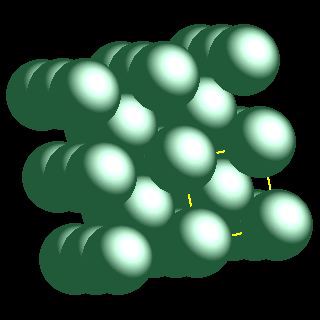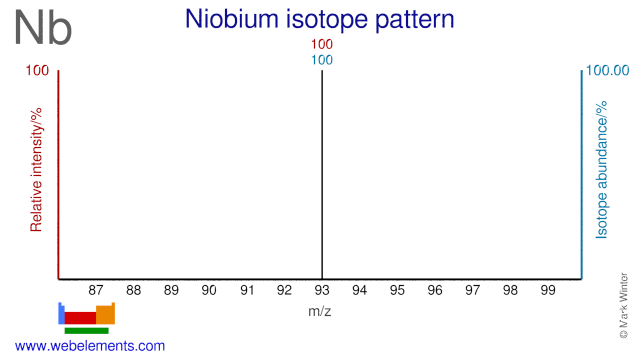Niobium - 41Nb: the essentials
- Name: niobium
- Symbol: Nb
- Atomic number: 41
- Relative atomic mass (Ar): 92.90637 (2)
- Standard state: solid at 298 K
- Appearance: grey metallic
- Classification: Metallic
- Group in periodic table: 5
- Group name: (none)
- Period in periodic table: 5
- Block in periodic table: d
- Shell structure: 2.8.18.12.1
- CAS Registry: 7440-03-1
Niobium atoms have 41 electrons and the shell structure is 2.8.18.12.1. The ground state electronic configuration of neutral niobium is [Kr].4d4.5s1 and the term symbol of niobium is 6D1/2.
Niobium: description
The name niobium was adopted officially by IUPAC in 1950, but a few commercial producers still like to refer to it as columbium. Niobium is a shiny, white, soft, and ductile metal, and takes on a bluish tinge when exposed to air at room temperatures for a long time. The metal starts to oxidize in air at high temperatures, and when handled hot must be done so under a protective atmosphere so as to minimize oxide production.
Niobium: physical properties
Density of solid: 8570 kg m-3
Molar volume: 10.83 cm3
Thermal conductivity: 54 W m‑1 K‑1
Niobium: heat properties
Melting point: 2750 [2477 °C (4491 °F)] K
Boiling point: 5017 [4744 °C (8571 °F)] K
Enthalpy of fusion: 20.5 kJ mol-1
Niobium: atom sizes
Atomic radius (empirical): 145 pm
Molecular single bond covalent radius: 147 (coordination number 5) ppm
van der Waals radius: 256 ppm
Niobium: electronegativities
Pauling electronegativity: 1.6 (Pauling units)
Allred Rochow electronegativity: 1.23 (Pauling units)
Mulliken-Jaffe electronegativity: (no data)
Niobium: orbital properties
First ionisation energy: 652.13 kJ mol‑1
Second ionisation energy: 1382 kJ mol‑1
Third ionisation energy: 2416 kJ mol‑1
Niobium: abundances
Universe: 2 ppb by weight
Crustal rocks: 17000 ppb by weight
Human: (no data) ppb by weight
Niobium: crystal structure

Niobium: biological data
Human abundance by weight: (no data) ppb by weight
Niobium has no biological role.
Niobium: uses
Niobium: reactions
Reactions of niobium as the element with air, water, halogens, acids, and bases where known.
Niobium: binary compounds
Binary compounds with halogens (known as halides), oxygen (known as oxides), hydrogen (known as hydrides), and other compounds of niobium where known.
Niobium: compound properties
Bond strengths; lattice energies of niobium halides, hydrides, oxides (where known); and reduction potentials where known.
Niobium: history
Niobium was discovered by Charles Hatchett in 1801 at England. Origin of name: from the Greek word "Niobe" meaning "daughter of Tantalus" (tantalum is closely related to niobium in the periodic table).Niobium: isotopes

Niobium: isolation
Isolation: isolation of niobium appears to be complicated. Niobium minerals usually contain both niobium and tantalum. Since they are so similar chemically, it is difficult to separate them. Niobium can be extracted from the ores by first fusing the ore with alkali, and then extracting the resultant mixture into hydrofluoric acid, HF. Current methodology involves the separation of tantalum from these acid solutions using a liquid-liquid extraction technique. In this process tantalum salts are extracted into the ketone MIBK (methyl isobutyl ketone, 4-methyl pentan-2-one). The niobium remains in the HF solution. Acidification of the HF solution followed by further extraction in MIBK gives an organic solution containing niobium.
After conversion to the oxide, metallic niobium can be made by reduction with sodium or carbon. Electrolysis of molten fluorides is also used.
